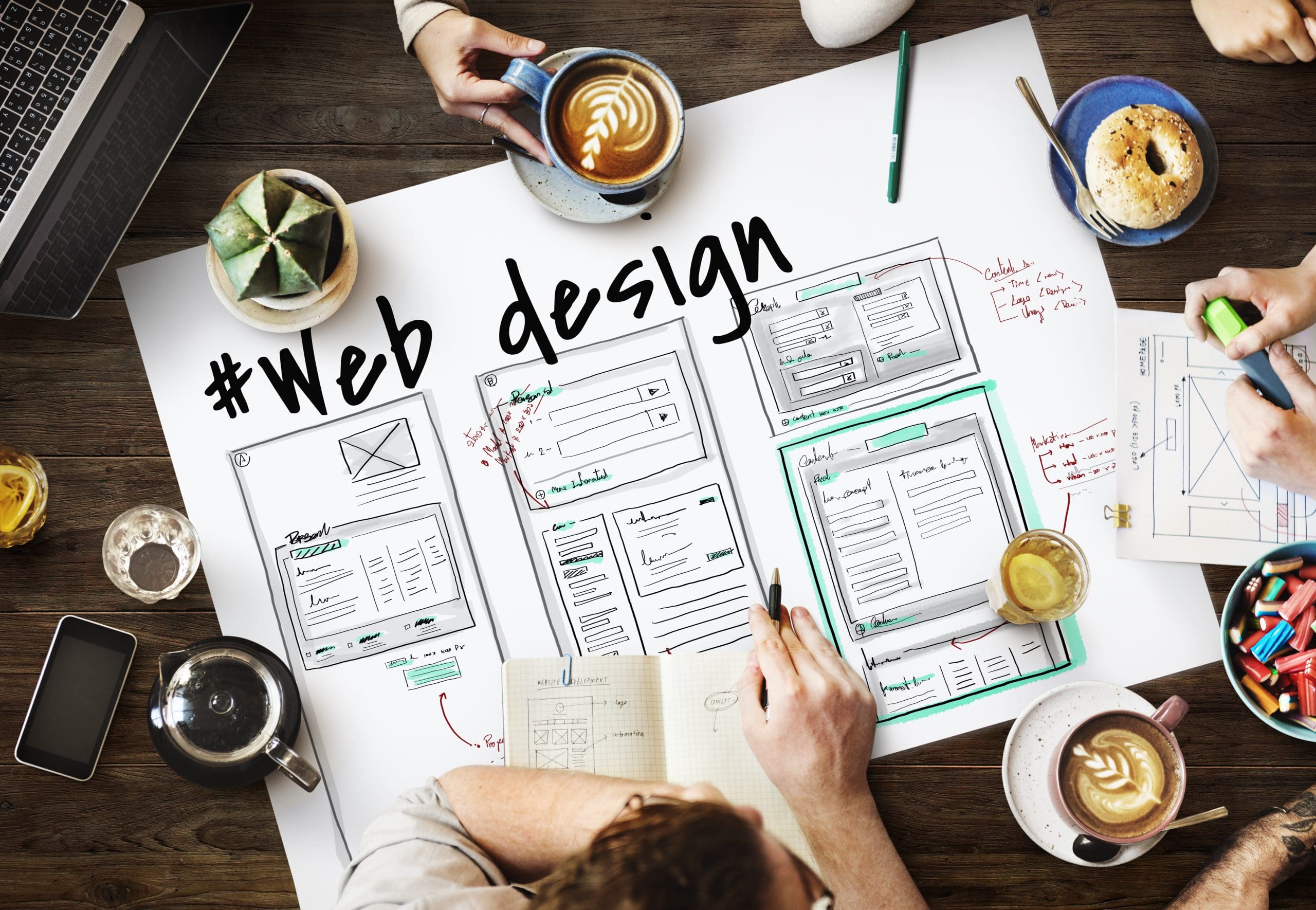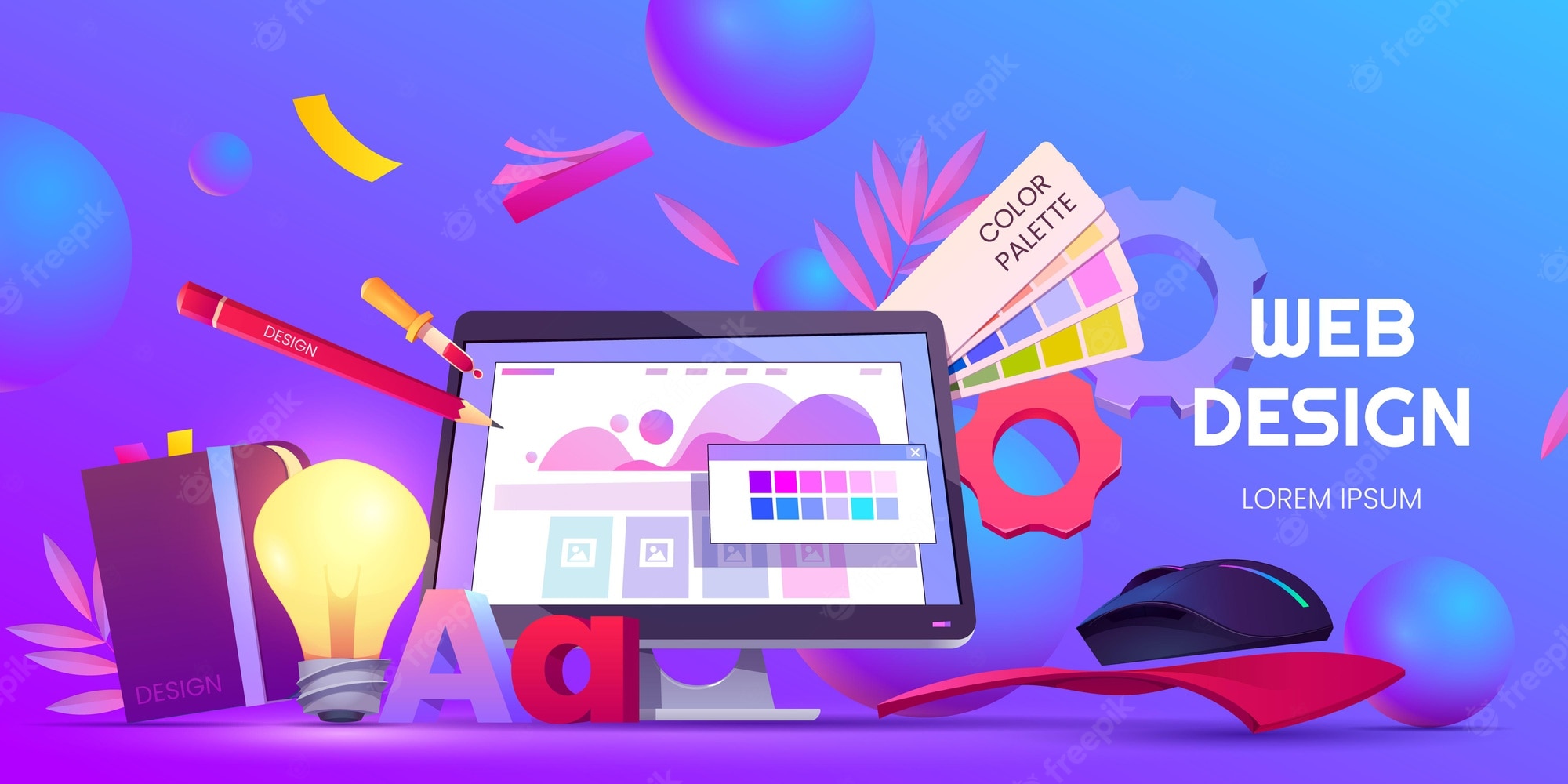Key mobile optimization tips from a professional Website Design Agency
Wiki Article
The Relevance of User Experience in Reliable Web Design Strategies
User experience (UX) functions as a cornerstone in effective web design approaches. It shapes how individuals connect with a site, affecting their contentment and chance of returning. A properly designed UX can boost interaction through user-friendly navigation and responsive formats. Forgeting these aspects may lead to frustration and boosted bounce prices. Recognizing the intricacies of UX is important for designers aiming to develop engaging electronic experiences that reverberate with diverse audiences. What variables genuinely drive effective user interaction?Recognizing User Experience and Its Effect On Style
User experience (UX) is typically viewed as a mere aspect of internet style, it fundamentally shapes how individuals communicate with a site. UX includes all aspects of the user's interaction, including functionality, availability, and total contentment. A positive UX cultivates interaction, motivating users to check out the website and return in the future. On the other hand, a negative experience can lead to frustration, leading to high bounce rates and lost chances for conversion.Layout aspects like navigation, format, and content company play vital functions fit this experience. Efficient UX style expects user needs and preferences, making sure that info is aesthetically appealing and easily accessible. Additionally, understanding user behavior through analytics can supply useful insights, notifying layout decisions that enhance usability. Eventually, an extensive understanding of UX permits designers to produce sites that not just bring in customers yet additionally promote purposeful interactions that line up with service objectives and user expectations.
Key Principles of Efficient User Experience
Effective user experience depends upon several vital principles that improve website functionality and engagement. Intuitive navigating layout, responsive format essentials, and the importance of visual power structure are important components that contribute to a seamless interaction in between individuals and web material. Recognizing these principles enables developers to produce even more easily accessible and straightforward electronic atmospheres.User-friendly Navigation Style
When individuals experience a site, instinctive navigating layout acts as a crucial portal to their total experience. Effective navigation permits customers to effortlessly find the details they look for, boosting their communication with the website. Key concepts consist of clear labeling, rational company, and constant positioning of navigation components. Tags must be straightforward, enabling customers to predict the web content they will locate. A well-structured hierarchy assists individuals recognize the partnership in between various sections, leading them through the site effortlessly. In addition, receptive food selections and conveniently obtainable web links add to a liquid experience across devices. By prioritizing user-friendly navigating, developers can greatly lower user frustration and rise involvement, eventually cultivating a positive perception of the website and its web content.Receptive Layout Essentials
A well-structured navigation system naturally brings about the need for a receptive layout, which is vital in today's varied digital landscape. A responsive format warranties that websites function flawlessly throughout numerous devices, consisting of desktops, mobile phones, and tablet computers. This versatility enhances user experience by allowing content to be easily obtainable and visually coherent, regardless of display size. Key concepts of responsive style include fluid grids, adaptable images, and media questions, which help with perfect watching. Furthermore, prioritizing touch-friendly elements boosts communication on mobile devices. By implementing a responsive format, developers can accommodate users' demands, decrease bounce rates, and boost involvement. Eventually, a well-executed receptive style fosters a favorable user experience, motivating visitors to check out the website even more.Aesthetic Pecking Order Relevance
Visual power structure plays an essential duty in guiding users with a site, making certain that important info records their interest initially. By tactically using dimension, shade, spacing, and contrast, developers can produce a clear pathway for users to follow. Bigger components often draw the eye, indicating their significance, while contrasting colors can highlight telephone calls to action. Additionally, regular alignment and group of related content enhance understanding, making navigating instinctive. Effective usage of visual hierarchy not just improves use but also supports the total visual of the website, promoting a positive user experience. When users can easily recognize one of the most important info, they are more probable to engage with the material, causing boosted fulfillment and interaction with the website.The Duty of Functionality in Web Design
Use plays an essential duty in web design, especially through navigating simpleness and adherence to availability standards. Reliable navigation improves user contentment by allowing site visitors to find details promptly and without effort. Meeting availability standards ensures that all users, regardless of their capabilities, can successfully communicate with the site.Navigation Simpleness
Simplicity in navigation stands as a cornerstone of effective web design, substantially influencing user experience. A structured navigation system allows customers to discover details promptly and with ease, reducing irritation and boosting satisfaction. Clear labeling and logical structure are essential components, guiding users effortlessly through the site. Redundant web links or overly complex menus can disorient individuals, bring about increased bounce rates. Furthermore, mobile responsiveness should be taken into consideration, ensuring navigation remains simple across gadgets. Minimizing and prioritizing important web pages clutter better sustains user involvement. Reliable navigating not just cultivates a favorable experience however additionally urges customers to explore the site better, ultimately bring about greater conversion prices. Hereof, navigating simpleness works as a vital consider the overall effectiveness of web design strategies.Access Criteria
User engagement is substantially improved when websites stick to accessibility criteria, ensuring that all individuals, no matter of their abilities, can browse and engage successfully. Compliance with these criteria not only widens the audience yet also boosts total user contentment. Easily accessible layout includes features such as text options for photos, key-board navigating, and sufficient shade comparison, which help with usage by people with specials needs. Additionally, applying these criteria can positively impact search engine optimization (SEO) by enhancing website framework and clarity. As web design evolves, prioritizing availability comes to be crucial in promoting a comprehensive digital environment. By embracing these criteria, developers contribute to an extra equitable web, inevitably driving user commitment and interaction.Relevance of Responsive Design for User Interaction
As customers increasingly gain access to sites with a range of devices, the importance of responsive layout ends up being critical for engaging individuals efficiently. Responsive design guarantees that a website adapts perfectly to different screen dimensions, giving an ideal viewing experience despite the tool utilized. This versatility improves user engagement by assisting in simpler navigation and communication with material.When individuals experience a website that is receptive, they are most likely to remain longer, explore further, and return in the future. A properly designed receptive layout reduces the frustration frequently connected with zooming and scrolling on smaller screens, thereby reducing bounce rates. Additionally, receptive layout can favorably affect online search engine rankings, as search engines focus on mobile-friendly internet sites. In today's digital landscape, where mobile usage proceeds to climb, applying responsive layout is not simply helpful, but vital for preserving user interaction and ensuring a positive experience throughout all devices.
Enhancing Load Times for Better User Satisfaction

To enhance tons times, internet developers should prioritize enhancing photos, leveraging web browser caching, and decreasing HTTP demands. In addition, using Web content Distribution Networks (CDNs) can quicken material delivery by distributing it across various geographic locations. Streamlining code, my website such as compressing CSS and JavaScript documents, even more adds to faster packing speeds.
Inevitably, a dedication to boosting lots times not just improves user fulfillment however likewise enhances brand commitment and enhances the probability of repeat check outs. additional reading A swift, smooth experience is essential for maintaining customers and fostering positive interactions.
The Influence of Visual Hierarchy on User Interaction
Aesthetic power structure works as an essential element in guiding user interaction on a website. By arranging material in a manner that prioritizes details visually, developers can influence how customers navigate and involve with a site. This hierarchy is established with different layout techniques, consisting of size, contrast, spacing, and shade. For example, bigger font styles or bold shades attract interest to essential elements, such as telephone calls to activity or headings, while controlled shades and smaller sized font styles can indicate subservient information.Reliable aesthetic hierarchy assists customers quickly identify what is crucial, minimizing cognitive load and improving use. It permits instinctive navigating, making it much easier for users to locate what they need without frustration. As customers communicate with a web site, a well-structured aesthetic power structure cultivates a more rewarding experience, eventually causing greater interaction and conversion prices. Developers must prioritize these concepts to develop a efficient and user-centered web setting.
Measuring User Experience: Methods and devices

Regularly Asked Questions
Exactly How Can I Boost My Website's User Experience on a Budget plan?
To boost a website's user experience on a budget plan, one can maximize page tons rate, streamline navigating, implement responsive style, boost material clarity, and gather user responses for continual refinements, guaranteeing a gratifying site visitor experience.What Are Usual User Experience Mistakes to Stay Clear Of in Web Design?
Usual user experience mistakes in web design include cluttered formats, inadequate navigating, slow-moving filling times, absence of mobile responsiveness, overlooking access, irregular branding, and falling short to focus on user feedback - agency for web design. Each can considerably impede overall site effectiveness
Just how Often Should I Update My Site for Better User Experience?
Internet sites must be updated regularly, preferably every couple of months, to maintain ideal user experience. Constant updates assist address use issues, revitalize web content, and adjust to transforming user needs, ensuring the website stays appropriate and engaging.
Can User Experience Influence SEO Rankings on My Web site?
User experience can significantly influence SEO rankings, as internet search engine prioritize web sites that provide seamless navigating, fast packing times, and interesting content. A positive user experience can cause lower bounce rates and greater search visibility.What Function Does Access Play in User Experience Style?
Availability plays an important visit the website function in user experience layout by ensuring that all people, no matter capacities, can navigate and engage with a site successfully. This inclusivity boosts total complete satisfaction and interaction amongst varied customers.User experience (UX) is often perceived as a simple element of internet layout, it fundamentally shapes how users communicate with a web site. User interaction is substantially boosted when websites adhere to accessibility standards, ensuring that all individuals, regardless of their capabilities, can navigate and interact effectively. Gauging user experience (UX) is essential for understanding just how properly an internet site fulfills the requirements of its individuals. Additionally, usability screening, where genuine individuals navigate the website while viewers keep in mind problems, offers straight responses on user experience. Common user experience errors in internet style include messy designs, poor navigating, sluggish loading times, absence of mobile responsiveness, overlooking access, inconsistent branding, and failing to focus on user comments.
Report this wiki page